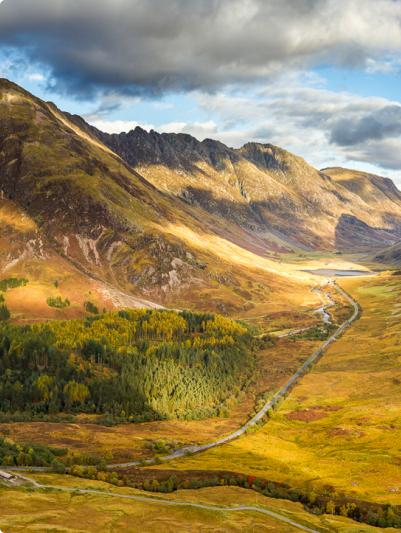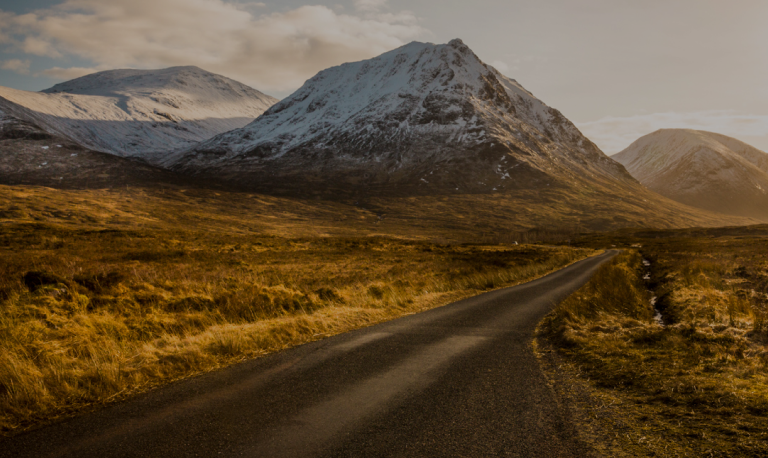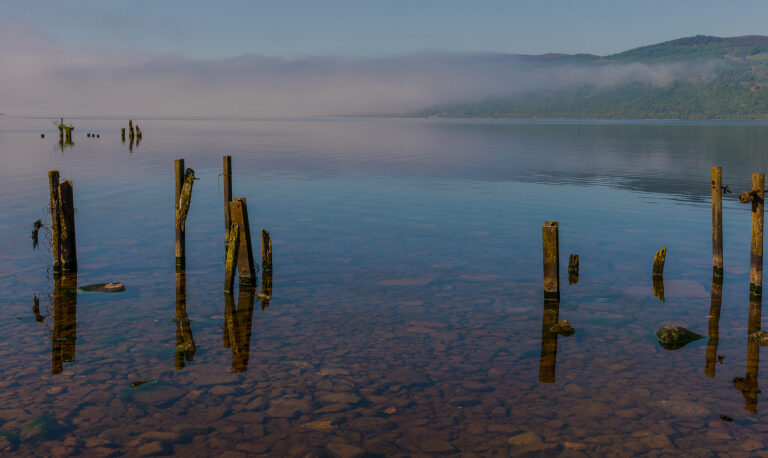Walking Back in Time on the Borders Abbeys Way
Often overlooked in favour of Scotland’s famous Highland walks, the Borders Abbeys Way offers visitors a fascinating flavour of scenic landscapes, historical ruins, and charming towns.
There is variety here that few routes can better – best seen through the eyes of the picturesque River Tweed which flows through the region.
My journey took me to the very heart of the Scottish Borders region, with some interesting detours from the recognised route. First off, some brief history about the Borders Abbeys Way: The trail connects the four great ruined abbeys of the region – Kelso, Jedburgh, Melrose and Dryburgh – as well as the towns of Selkirk and Hawick, giving the trail its fitting name.
Monks lived at the abbeys between the 12th and 16th centuries – a turbulent period in the Borders history when the abbeys endured many sieges by invaders from the south.
View this post on Instagram
Jedburgh
Jedburgh was my first stop, a town which is famous as being the gateway to Scotland, with its location just 10 miles beyond the English border meaning that it was frequently attacked. To whet my appetite for the day ahead I made a quick dash through town to arrive at the imposing Jedburgh Abbey, founded by David I in around 1138 for Augustinian Canons.
What struck me immediately was the Romanesque and early Gothic-style architecture, giving the abbey an impressive shell which was extremely peaceful to walk around given the lack of tourists and bright blue skies.
The visitors centre provided a fascinating overview of the abbey’s past, including the fact that nobody who worked on its construction for their entire life saw its completion in 1200 – a shocking discovery which stood as testament to the harsh conditions endured during the medieval ages.
A gripping insight into life prior to the days of the abbey was also presented, demonstrating the importance of Jedburgh as a religious site with several artefacts and archaeological finds outlined – some dating back to the 8th century!
During the Wars of Independence, English and Franco-Scottish armies would constantly fight for control of the abbey due to its strategic location and grandiose, whilst the Protestant Reformation of 1560 finally saw it suppressed.
View this post on Instagram
Kelso
Next up was Kelso which helped cast my mind back to more recent history. Beside Kelso Abbey stands the Great War Memorial, paying homage to Kelso’s fallen heroes of WWI. Within the abbey’s grounds, the cemetery illuminates the young ages of brethren who gave their lives on the Normandy Beaches in 1944.
Despite Kelso being small in size, both the fading sandstone and exemplary granite tombstones certainly conveyed an enormous courage shown throughout the Borders during a time of great need.
Whilst Kelso Abbey wasn’t quite as intimidating as Jedburgh and in a more obvious state of decay, I found a monument which acts as the heartbeat of a vibrant community. Rennie’s Bridge provides excellent views up the River Tweed of Floors Castle – Scotland’s largest inhabited castle – with Kelso Abbey standing in the corner of the eye.
Further inland you could be mistaken for thinking that Kelso was a town of much larger proportions with its impressive Cross Keys Hotel and Town Hall towering over the town square.
View this post on Instagram
Smailholm Tower
I’m a big fan of travelling to isolated attractions, whether that involves meandering through narrow country passes or walking up a lonely hill to get that perfect view. A short detour from the Borders Abbeys Way, Smailholm Tower provided the perfect recipe that satisfied both criteria and I was immediately intrigued when reading up on it prior to my trip.
Standing at 65 feet it provides wonderful views of the surrounding countryside. This unobstructed vantage point offers views of the Eildon Hills as far as the eye could see – a pleasant contrast from the man-made wonders of Jedburgh and Kelso.
Constructed during the 15th century, how did Smailholm Tower contribute to the world? It is believed that Sir Walter Scott – a renowned Scottish historical novelist, playwright, poet and historian – gained early inspiration for his famous literature from peering into its walls, having been brought up at nearby Sandyknowe Farm.
View this post on Instagram
Melrose
I gathered speed towards Melrose where I paid a visit to Burts Hotel for lunch – a venue awarded two AA Rosettes every year since 1995 for its outstanding cuisine. After an 11/10 fish and chips it was onwards to abbey number 3 of the day.
Melrose Abbey is famous for its association with Robert the Bruce, with the heart of the former King of Scots buried here. With its historical connections clear from the outset, Melrose Abbey is widely acclaimed as being one of Britain’s best-known ruins. Interestingly, its outer wall is decorated with abnormal sculptures including hobgoblins, cooks with ladles, and a bagpipe playing pig!
Today, Melrose not only sits on the Borders Abbeys Way but also acts as the starting point for those walking the St Cuthbert’s Way, which bridges the national border between Scotland and England.
Melrose was the prettiest urban area I encountered on the day, with a cluster of local artisanal shops selling delightful Scottish produce, along with traditional pubs providing a backdrop to old red telephone boxes that demonstrated the slow modernisation of Scotland’s enchanting borderlands.
View this post on Instagram
Dryburgh
The journey to Dryburgh Abbey involved taking the scenic route from Melrose through the villages of Newtown and St Boswells before crossing over the River Tweed once again, with the Eildon Hills in constant view.
What surprised me most was the tranquillity and remoteness of Dryburgh compared to its 3 counterparts I previously experienced. Aside from a small visitors centre and the nearby Dryburgh Abbey Hotel housed within castle walls to give an authentic sense of place and purpose, there were no other impediments to enjoying Dryburgh in its natural glory – no shops obscuring the view and no roaring buses deafening the ear – perfect!
Yellow shrubs provide an immense runway towards the remains of the abbey, with the flowing River Tweed heard in the backdrop, and low flying birds hunting for their next prey. Having been set on fire 3 times in its long history, Dryburgh Abbey remains remarkably complete and is the burial place of Sir Walter Scott. The peaceful atmosphere provides a fitting resting place for one of Scotland’s most influential figures.
View this post on Instagram
Discover the Beautiful Scottish Borders
In summary, the Borders Abbeys Way is a highly rewarding journey that combines every colourful aspect that Scotland is famous for. Not least it was highly surprising, providing a perfect introduction to a region I’ve had limited exposure to – typically preferring to go north rather than south on weekend escapes.
On my next visit, I’ll be sure to take in Floors Castle from the inside, the home of Walter Scott at Abbotsford House, and the countless museums on offer.
If you’d like to experience the Borders Abbeys Way for yourself, Absolute Escapes offer self-guided walking holidays on the trail which include carefully-selected accommodation, daily baggage transfers, and guidebook/map.
Stuart Dodds


